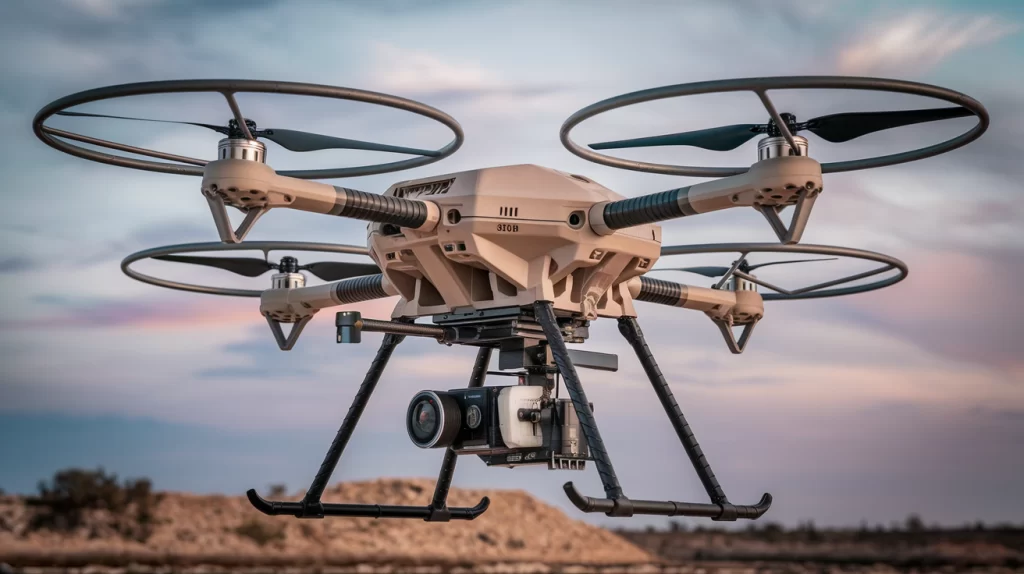Hybrid UAV Market: Advancing Aerial Solutions with Sustainable and Versatile Technologies (2024–2030)
The hybrid UAV market is set for robust growth, increasing from USD 760.7 million in 2024 to USD 1,705.0 million by 2030, at a CAGR of 14.4%. Hybrid UAVs, which integrate electric and conventional propulsion systems, offer unique advantages, including longer endurance, higher payload capacity, and operational versatility. These capabilities make them indispensable across industries such as logistics, agriculture, surveillance, and defense, where efficiency, reliability, and sustainability are paramount.

Download PDF Brochure @
https://www.marketsandmarkets.com/pdfdownloadNew.asp?id=136542756
Technological innovations are at the heart of this market’s growth. Advanced hybrid propulsion systems, combining combustion engines with electric motors, are redefining performance benchmarks, enabling extended flight times and reduced fuel consumption. Additionally, AI and machine learning are being employed to enhance navigation, automate complex operations, and optimize energy usage. These advancements result in more precise and reliable UAV systems, capable of executing tasks such as real-time mapping, environmental monitoring, and infrastructure inspection with greater efficiency.
The Lift + Cruise UAV segment is expected to experience the fastest growth during the forecast period. Combining VTOL capabilities with fixed-wing efficiency, these UAVs are ideal for urban air mobility, emergency response, and cargo delivery. Developments in lightweight materials, such as carbon composites, further enhance performance by reducing weight without compromising structural integrity. Sophisticated control systems and AI-driven optimization improve flight reliability, positioning Lift + Cruise UAVs as a key driver of market expansion.
In terms of industry applications, the commercial segment leads the growth trajectory, with businesses leveraging hybrid UAVs for precision agriculture, infrastructure monitoring, and last-mile logistics. These UAVs provide extended flight ranges and payload capacities, addressing operational challenges in remote and large-scale environments. The defense and government sectors also show strong demand, utilizing hybrid UAVs for border surveillance, disaster response, and tactical missions where endurance and adaptability are critical.
Geographically, North America is anticipated to retain the largest market share, supported by advanced aerospace infrastructure, significant R&D investments, and a favorable regulatory environment. The Federal Aviation Administration (FAA)’s evolving frameworks for UAV integration are accelerating market adoption across commercial and public sectors. Meanwhile, the Asia-Pacific region emerges as the fastest-growing market, driven by rapid urbanization, increasing demand for precision agriculture, and government-backed initiatives in UAV technology.
The market’s expansion is further fueled by evolving sustainability goals. Hybrid UAVs, with their reduced carbon emissions and fuel consumption, align with global environmental targets, making them a preferred choice for industries seeking greener operational solutions. The integration of clean energy technologies, such as fuel cells, offers additional growth potential for sectors requiring long-endurance UAVs with minimal environmental impact.
Key Market Players
Leading players in the hybrid UAV market, including Northrop Grumman, Thales, JOUAV, and Elroy Air, are focusing on innovation through advanced propulsion systems, AI-based navigation, and strategic partnerships. These companies are driving the transition towards more efficient, versatile, and sustainable UAV solutions.
Ask for Sample Report @
https://www.marketsandmarkets.com/requestsampleNew.asp?id=136542756
By 2030, hybrid UAVs are expected to redefine aerial operations across industries, delivering advanced capabilities while addressing environmental and operational challenges. As technology continues to evolve, the hybrid UAV market will remain at the forefront of innovation, setting new standards for unmanned aerial systems.
24World Media does not take any responsibility of the information you see on this page. The content this page contains is from independent third-party content provider. If you have any concerns regarding the content, please free to write us here: contact@24worldmedia.com

